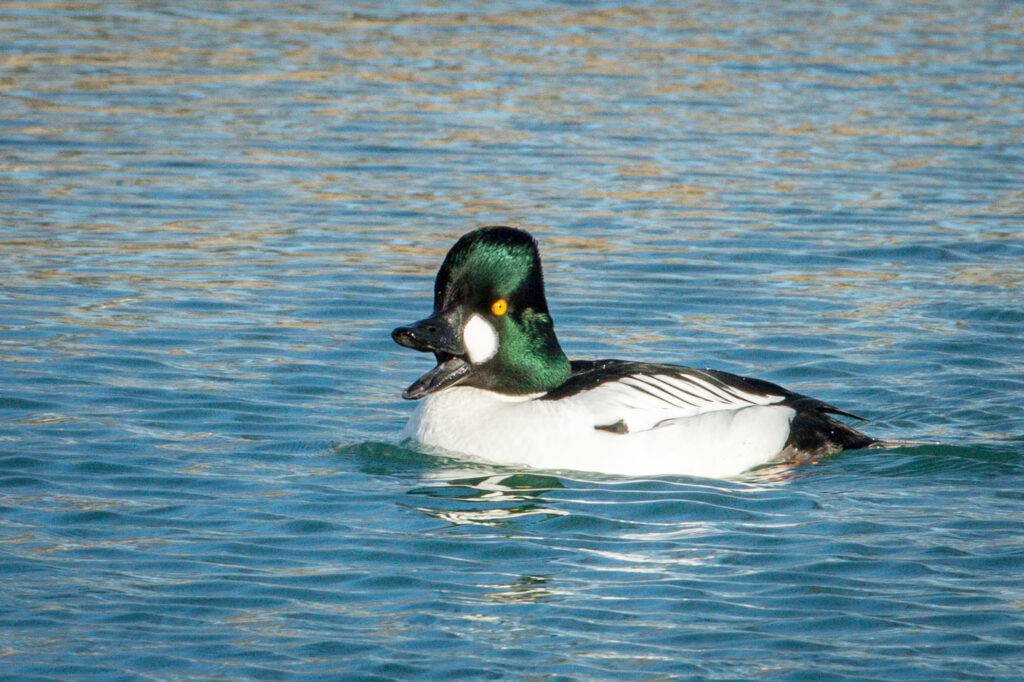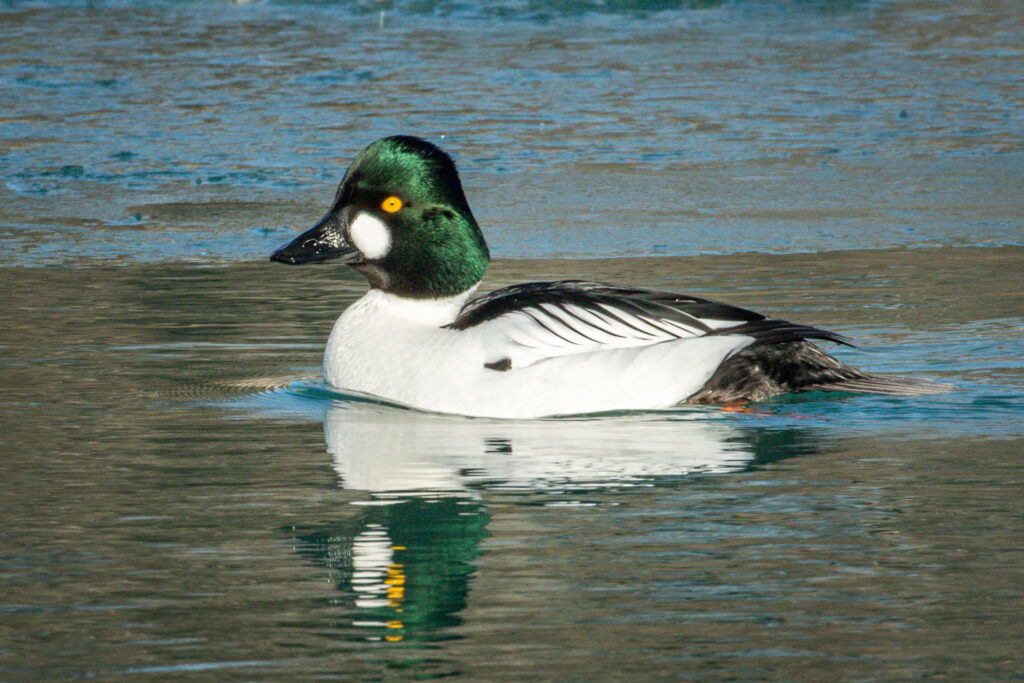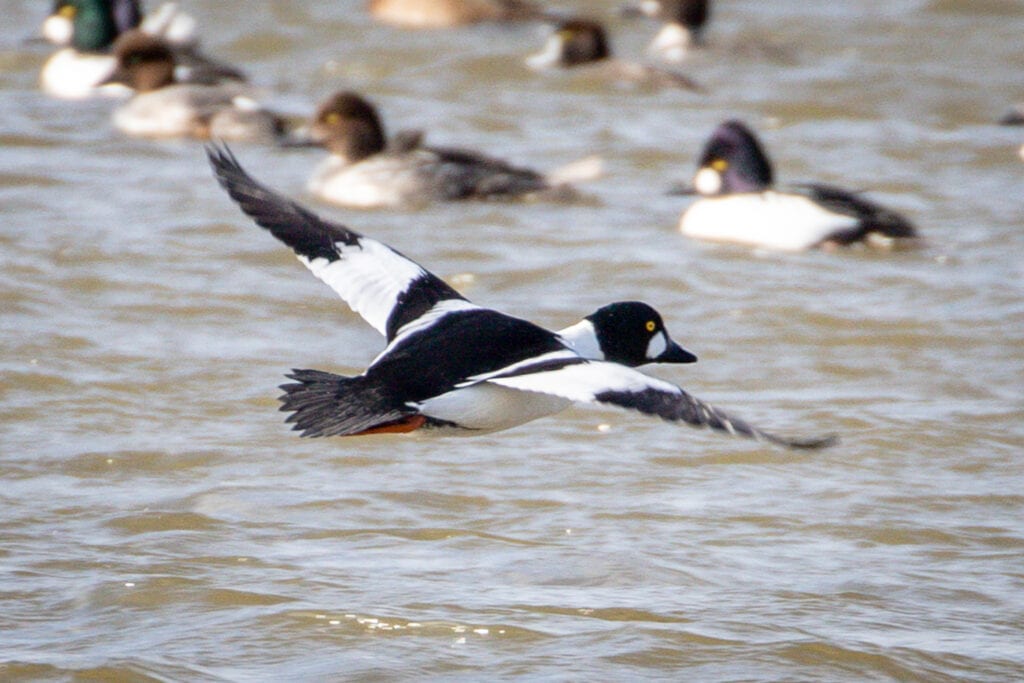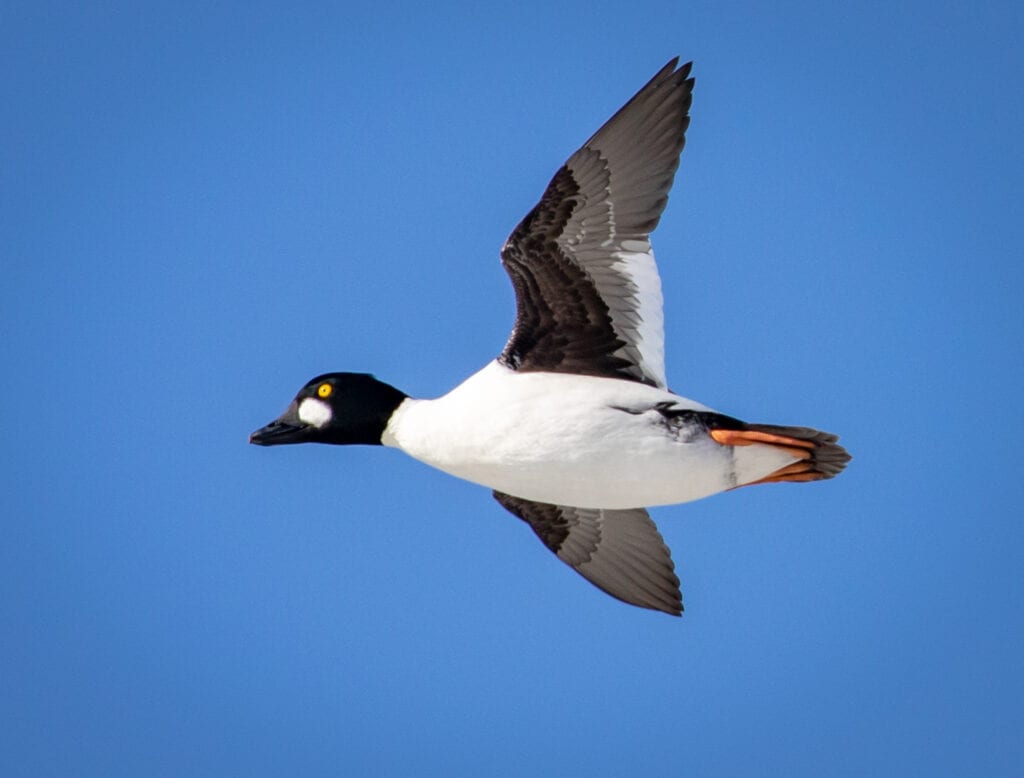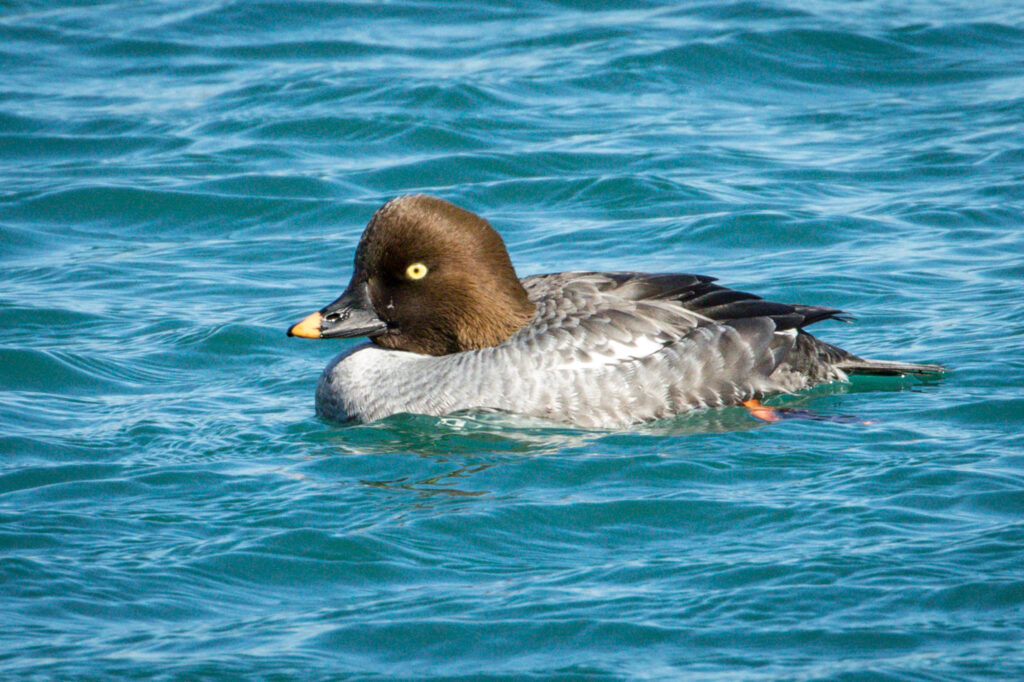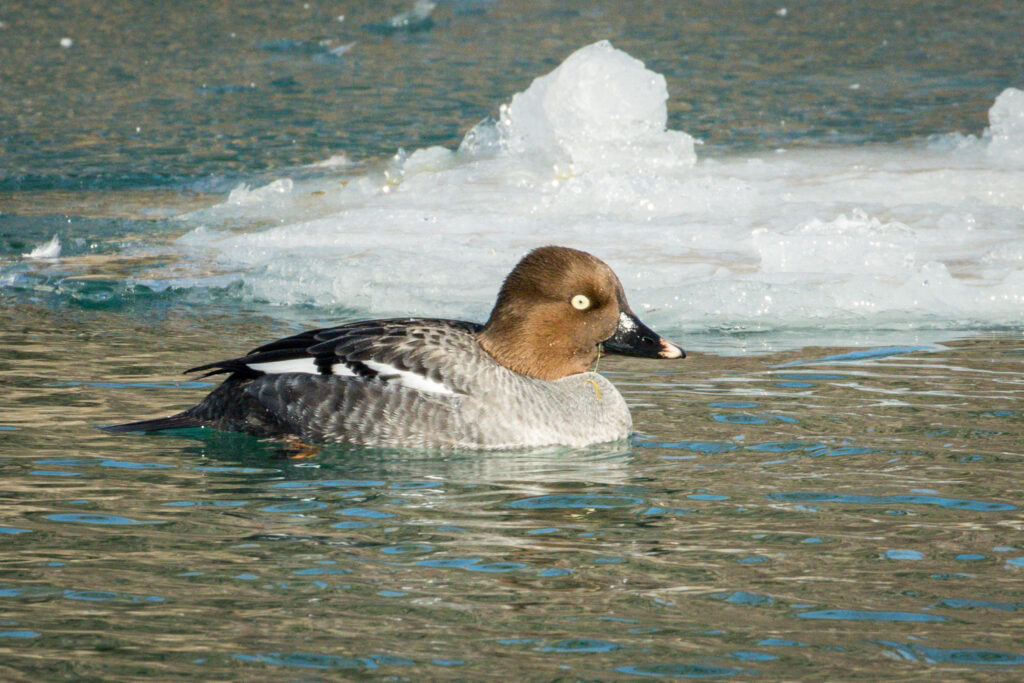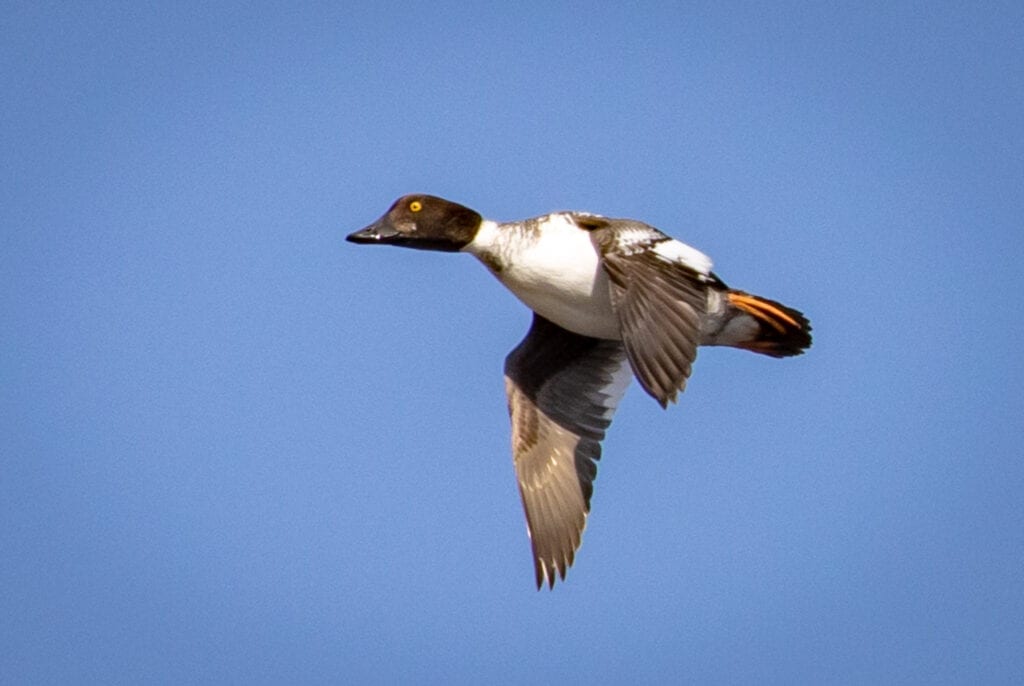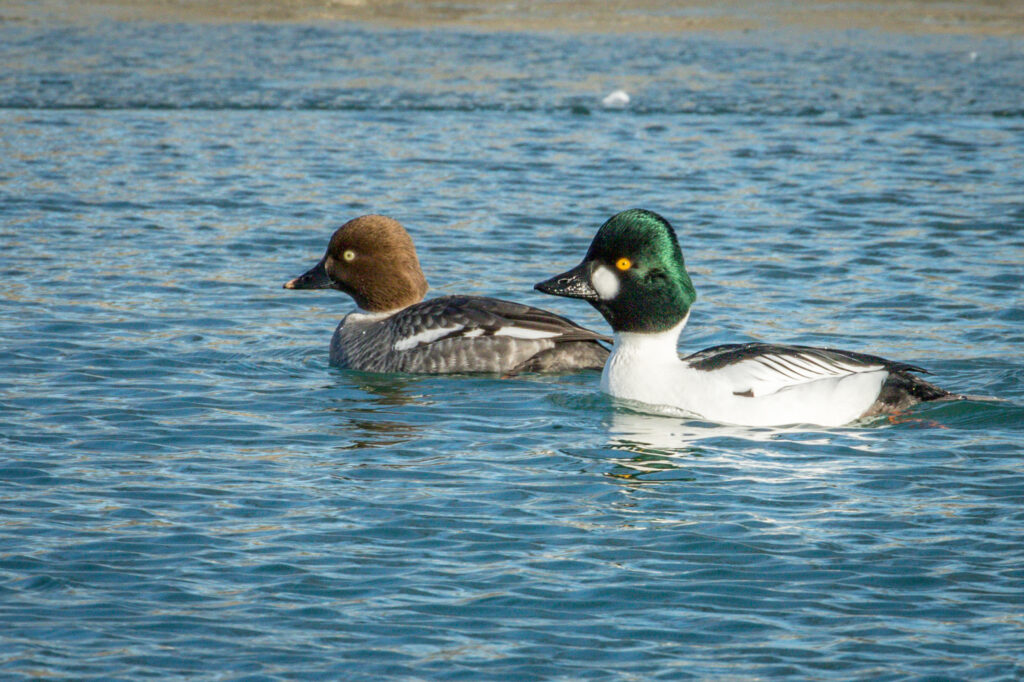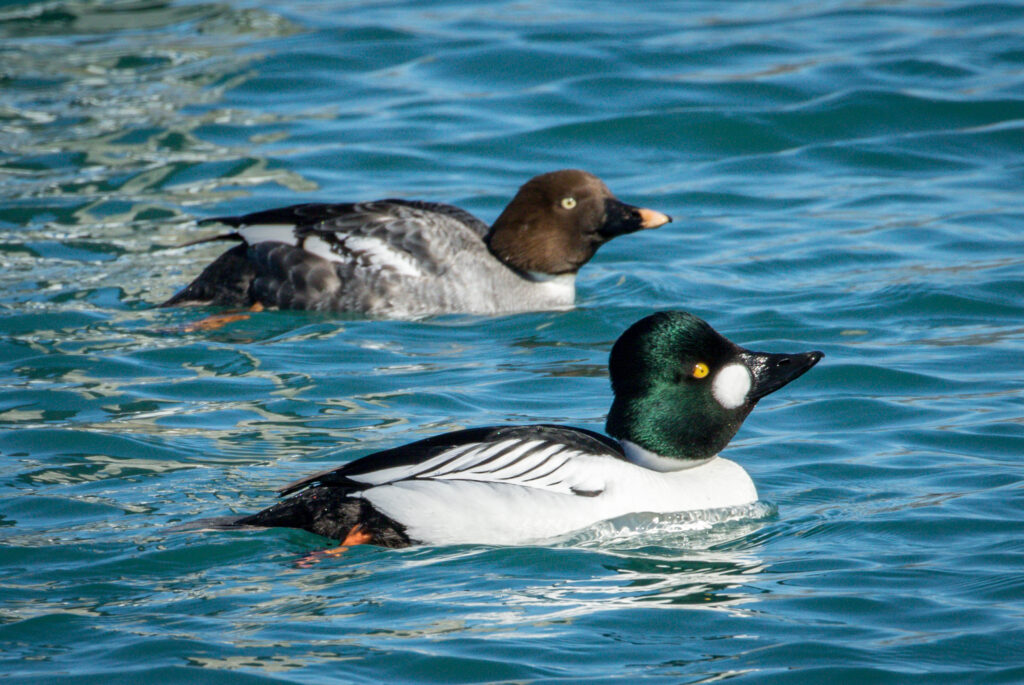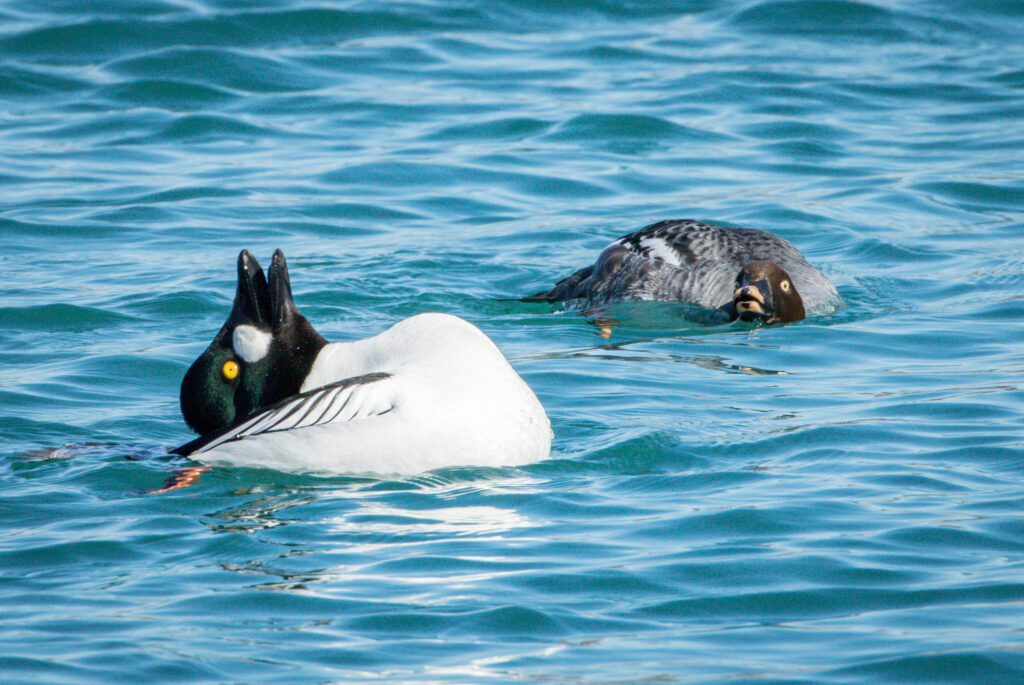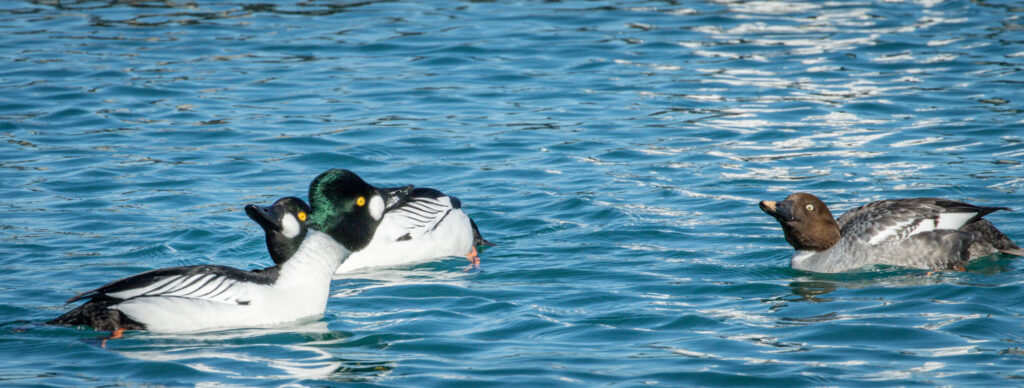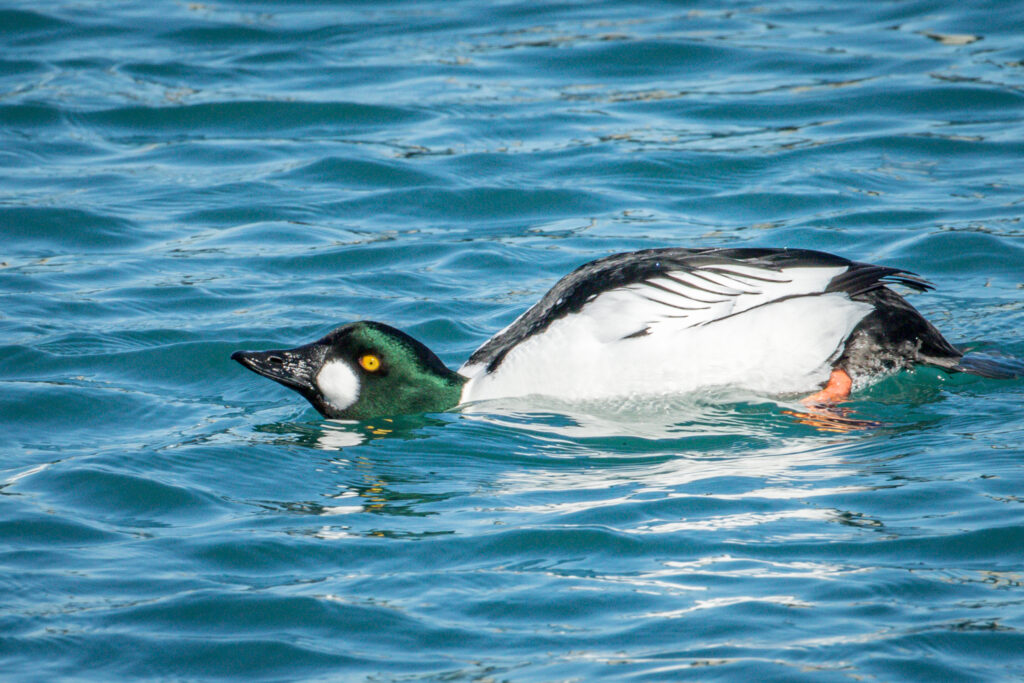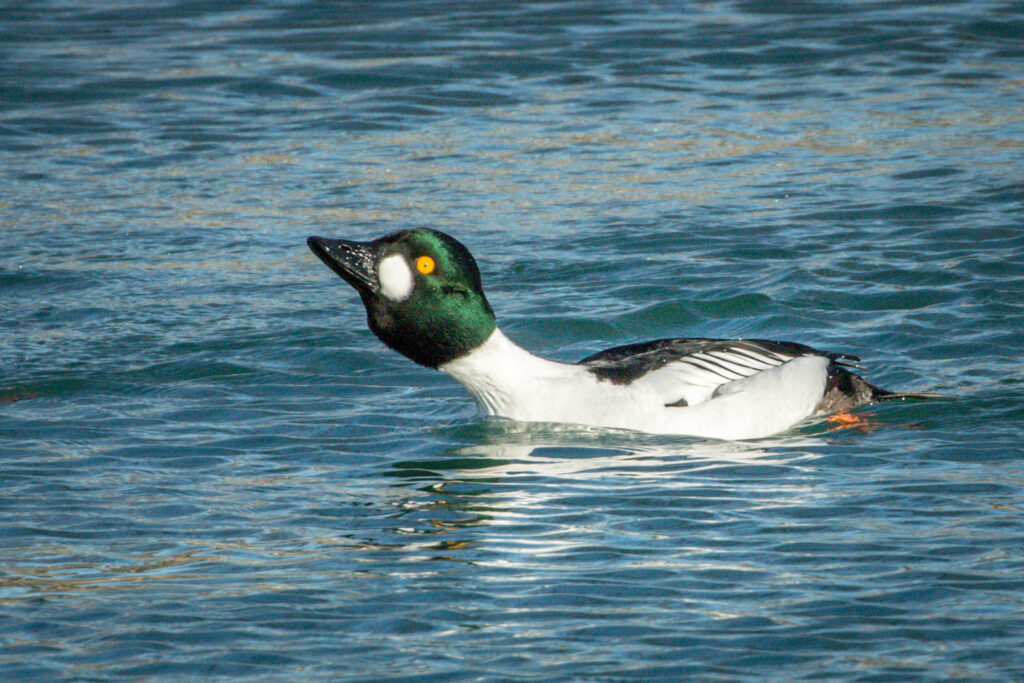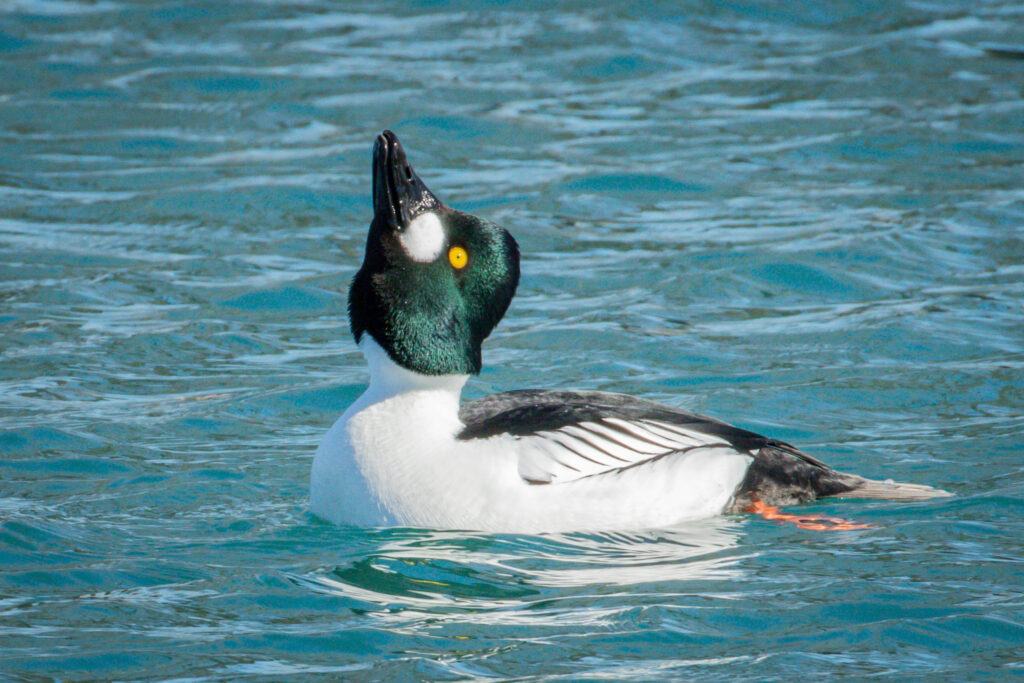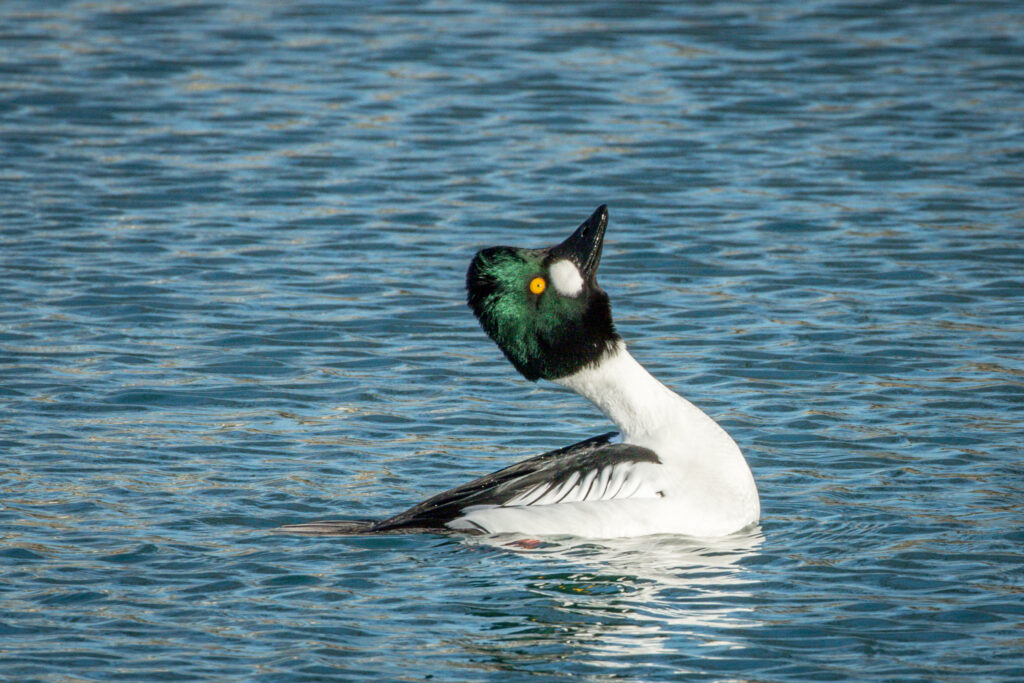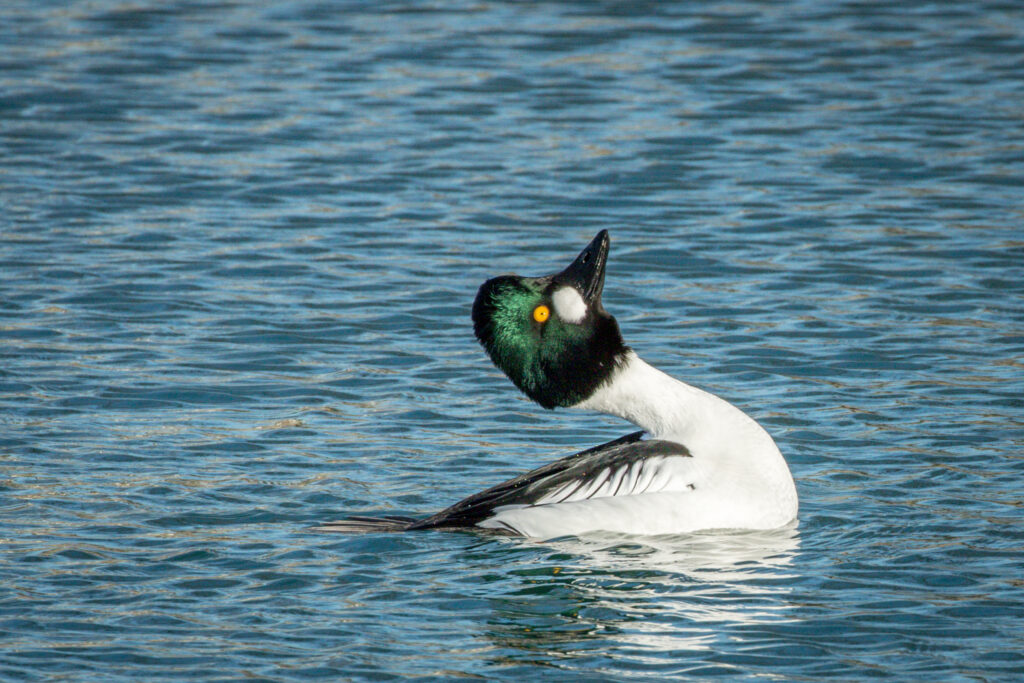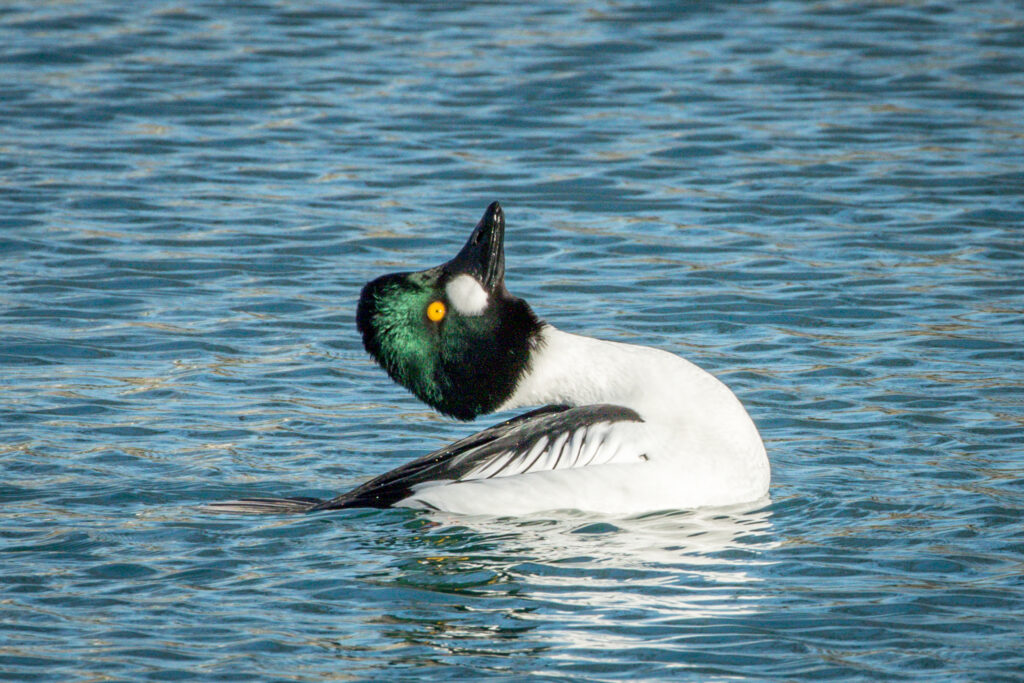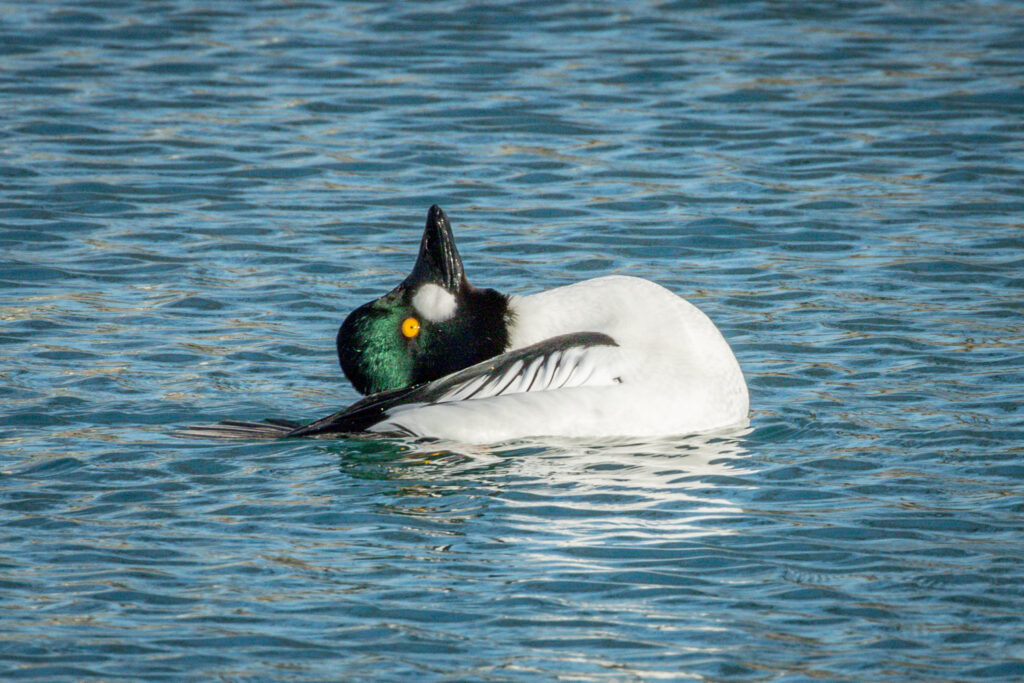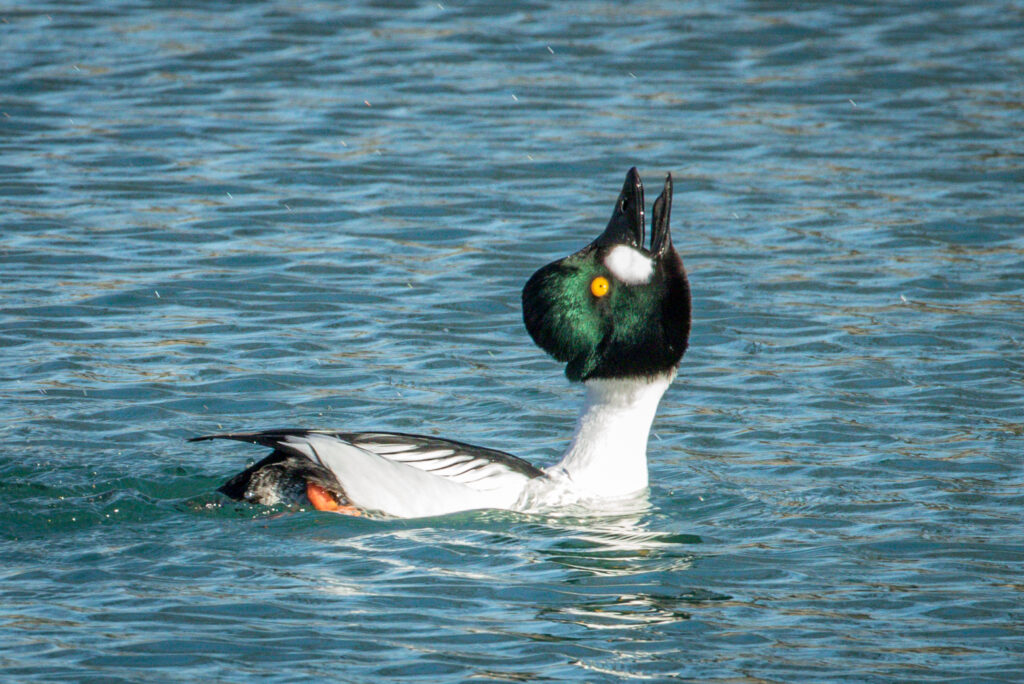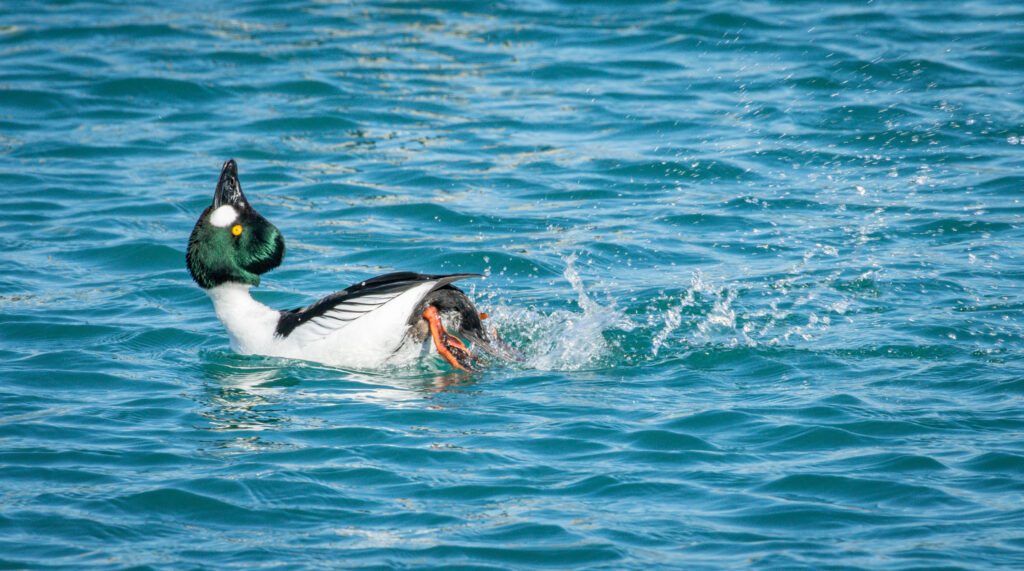Common Goldeneye Is A Popular Winter Resident
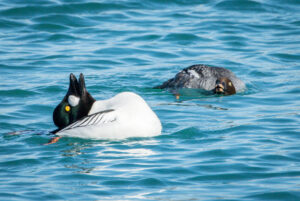 During the winter months the Common Goldeneye (Bucephala clangula) is a frequent visitor to almost any body of open water throughout the U.S. – they have an extensive range in the U.S. extending coast to coast and as far south as the Gulf of Mexico. According to Cornell’s All About Birds website the Common Goldeneye’s breeding grounds extend from the U.S./Canada border all the way up to Alaska. In the midwest we are used to finding them on the water during winter, but they actually nest in tree cavities in the summer. Interestingly enough a day or two after hatching the mother will stand on the ground beneath the nest and call her chicks to jump down to the ground some 10-40 feet below!
During the winter months the Common Goldeneye (Bucephala clangula) is a frequent visitor to almost any body of open water throughout the U.S. – they have an extensive range in the U.S. extending coast to coast and as far south as the Gulf of Mexico. According to Cornell’s All About Birds website the Common Goldeneye’s breeding grounds extend from the U.S./Canada border all the way up to Alaska. In the midwest we are used to finding them on the water during winter, but they actually nest in tree cavities in the summer. Interestingly enough a day or two after hatching the mother will stand on the ground beneath the nest and call her chicks to jump down to the ground some 10-40 feet below!
Common Goldeneye have a distinctive sound when they fly – like a warbling whistle. When many of them take off at the same time the whistling sound is very pronounced and sounds like something out of a horror film. The noise actually comes from the movement of their wings through the air; they are fast fliers and can reach speeds of 40 mph. When on the water they are usually silent but give off a single hoot at the end of one of their elaborate mating displays.
Common Goldeneye Gallery
Let’s start by viewing typical males and females swimming and flying. Click on any picture to learn more about the shot.
Male Common Goldeneye
Note the male has a beautiful iridescent black/green head, a long white body and the bright yellow eyes it is named for.
Female Common Goldeneye
The female has a rich brown head, a grey body showing some of the white patch on their secondaries. Note the reddish-yellow tip on the end of the bill.
Male and Female Common Goldeneyes Together
In general Common Goldeneyes pair up for breeding season (the male leaves shortly after incubation). Note in the last picture the male (L) displays a “Head Throw” pose while the female (R) uses the “Jiving” pose to indicate she has selected her mate (see more about these poses below).
Pictures of Common Goldeneye Courtship Displays
Observers have documented 14 different poses Common Goldeneyes exhibit, mostly during courtship. I was able to identify several of these poses in my pictures with the help of Miles T. Meyers’ Master’s Thesis (1953) which can be found HERE (an enthralling 254 page tome entitled, “An Introduction to the Behavior of the Goldeneyes: Bucephala Islandica and B. Clangula (Aves Class, Family Anatidae”). Thanks, Miles!
Female “Jiving”
Although we typically think that males perform the mating rituals the female Common Goldeneye responds to the male’s actions with her own behaviors. The picture below is a display of “Jiving”, which is a courtship response by a female to a preferred male that says, “I belong to you”. Note that the female (Right) has her head down and her head is withdrawn toward the body. She is directing her behavior toward the male in the foreground.
In some cases, like in the picture below, “Jiving” occurs when another male is nearby; the female will rush at the unwelcome male with her beak open to indicate she has selected another as a mate.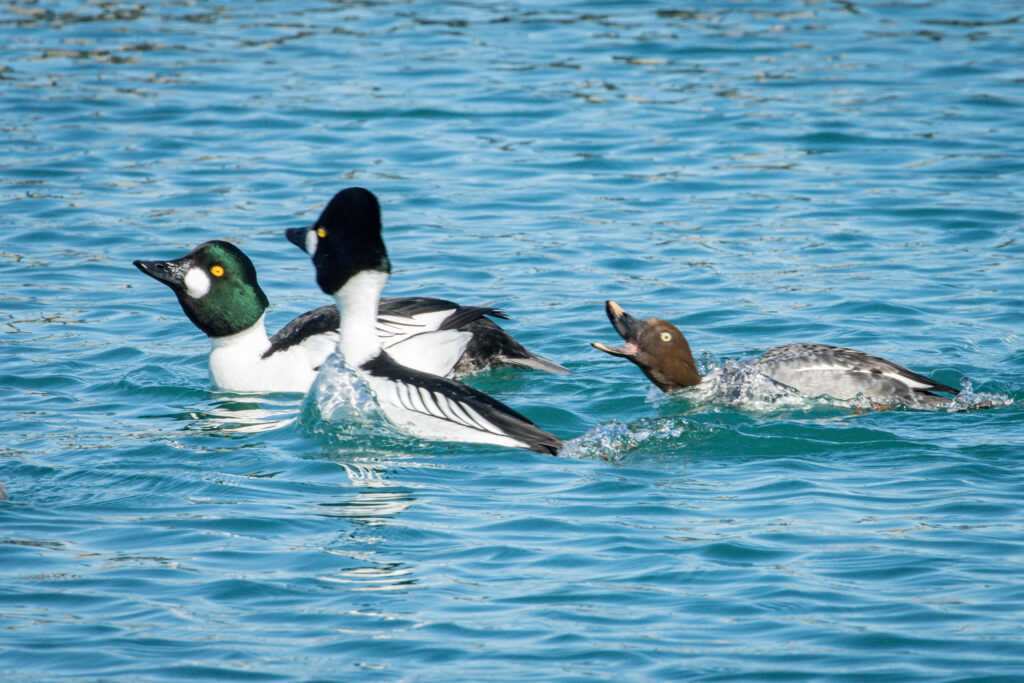
Male “Laying Neck on Water”
When the drake (male) Common Goldeneye displays its “Laying Neck on Water” pose, it is interpreted as a threat posture. The less neck shown, the more motivated the drake is in its aggression. Since the neck is mostly exposed in the picture below the drake is demonstrating a relatively low rate of aggression.
Male “Bowsprit”
A Bowsprit is a type of sailing ship’s mast which extends forward of the bow. The Common Goldeneye uses the “Bowsprit” pose as part of the courting process and as a greeting function. Note in the picture below how the neck angles out about 45° from the body with the head extended along the same line.
Male “Masthead”
Like the “Bowsprit” the “Masthead” pose is used by the male Common Goldeneye as part of its courting display. Here, the drake raises its head and extends it neck to vertical, pointing the beak straight up.
Male “Head-throw”
Head-throw is the most frequent display in Common Goldeneye courting parties. If you’ve ever seen them during breeding season you probably have noticed males tilting their heads back until the crown of the head actually touches its back. Below is a sequence of pictures showing the position of the head during the “Head-throw”. Occasionally, as the head is returned to normal, the male gives a little “hoot” when the head reaches “Masthead” position, as seen in the final pic.
Male “Kick”
There are other poses I did not capture images of but I will update this post if and when I do.
Stay Safe. Go Birding. Take Pics. Post Here. Repeat
Mike
If you are just visiting and would like to know more about GreatBirdPics.com CLICK HERE. Members can post their beautiful bird images, create a webpage of their images, make comments on other’s pics, and receive regular emails about birding and bird photography. It’s free with no ads.
